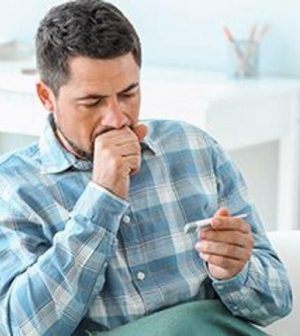- Skip Storing This Everyday Product in the Fridge Door
- Green Tea + B3 Pairing May Boost Brain Health
- Navigating Your Midlife Crisis: Embracing New Possibilities
- City Raccoons Showing Signs of Domestication
- Mapping the Exposome: Science Broadens Focus to Environmental Disease Triggers
- One Week Less on Social Media Linked to Better Mental Health
- Your Brain Changes in Stages as You Age, Study Finds
- Some Suicide Victims Show No Typical Warning Signs, Study Finds
- ByHeart Formula Faces Lawsuits After Babies Sickened With Botulism
- Switch to Vegan Diet Could Cut Your Greenhouse Gas Emissions in Half
Colds, Bronchitis Cases Resurged After Texas Eased COVID Rules

After Texas relaxed COVID-19 restrictions, other respiratory illnesses — such as colds, bronchitis and pneumonia — made rapid rebounds.
Pathologists from Houston Methodist Hospital found that the rhinovirus and enterovirus infections that can trigger these illnesses started rebounding in the fall of last year after Texas eased capacity limits in bars and restaurants.
More recently, they found that seasonal colds, as well as parainfluenza and respiratory syncytial virus (RSV) had strong increases in two months after Texas ended its mask mandate in early March and allowed businesses to operate at full capacity.
“This sharp resurgence we’re seeing of seasonal respiratory viruses in Houston is not surprising now that mask mandates have been lifted in Texas, and other precautions, such as social distancing and occupancy limits in stores, restaurants and events, have been removed.” said corresponding author Dr. S. Wesley Long, medical director of diagnostic microbiology at Houston Methodist.
In mid-May, the U.S. Centers for Disease Control and Prevention issued new guidelines allowing people who are fully vaccinated against COVID-19 to resume activities without masks or social distancing.
“Reports of non-COVID respiratory viral illnesses surging after COVID restrictions are lifted has been reported in Australia and elsewhere, and we’re now starting to see it happen in the U.S.,” Long said in a hospital news release.
The findings were posted on the preprint server medRxiv and have not yet been peer-reviewed.
Parainfluenza — a common virus that can cause respiratory illnesses, such as colds, bronchitis, croup and pneumonia — rose 424% in Houston from March to April, the study found. It also increased 189% from April through May 25.
Seasonal non-COVID coronaviruses, which usually appear in winter and decline in March, increased 211% from March to April and continued to increase in May, the study found.
Rhinovirus and enterovirus cases increased 85% from March to April. RSV cases increased 166% by May 25 when compared to April.
“For more than a year, COVID-19 was the primary cause of respiratory illness in the U.S., but now as we relax restrictions, it is important for clinicians to consider other respiratory pathogens may be causing spikes in disease outside of their usual seasonal peaks,” Long said.
“The study clearly demonstrates the utility of masks and social distancing and the effect these non-pharmacologic precautions had on suppressing all respiratory viruses, not just COVID-19,” he added.
More information
The U.S. Centers for Disease Control and Prevention has more on wearing masks.
SOURCE: Houston Methodist, news release, June 4, 2021
Source: HealthDay
Copyright © 2025 HealthDay. All rights reserved.










